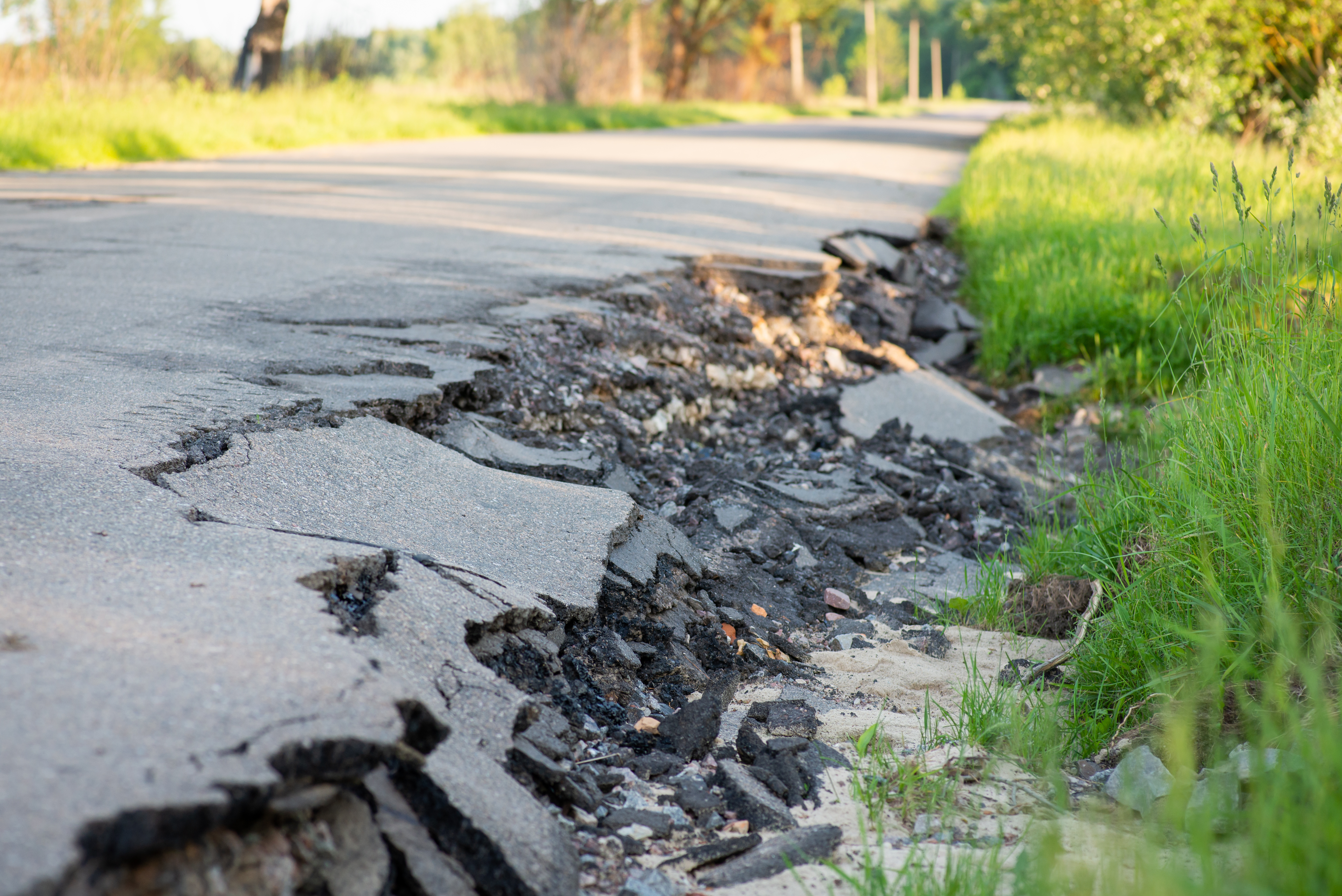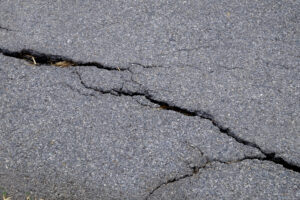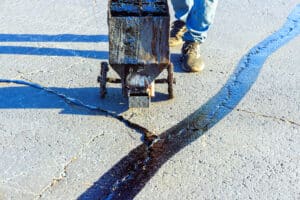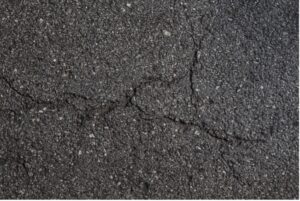As a property owner, maintaining the appearance and safety of your asphalt pavements is likely high on your list of priorities. Whether it’s the driveway that welcomes guests or the parking lot that serves as the first point of contact for customers, the condition of your asphalt speaks volumes. While asphalt is known for its durability, it is not immune to damage. One common issue that can occur with asphalt pavements is edge cracking. This type of cracking can cause serious damage if not addressed quickly. In this article, we will discuss what edge cracking is, its potential causes, and possible solutions to help you better understand how to prevent and repair it.
Understanding Edge Cracking
Edge cracking is a type of longitudinal cracking that occurs along the edges of asphalt pavements. It appears as a series of small, interconnected cracks and can extend from the pavement edge towards the center. In severe cases, the cracks may intersect and form large sections of separated pieces. Edge cracking is most commonly found in areas where there is high stress or pressure, such as at the edge of a driveway or near a curb. It can also occur in parking lots and roadways where heavy vehicles often turn or make sharp movements.
Causes of Edge Cracking
There are several potential causes for edge cracking on asphalt pavements, including:
- Insufficient base preparation: If the base layer of the pavement is not properly prepared or compacted, it can lead to uneven support and cause stress on the edges of the asphalt. This can result in cracking over time.
- Poor drainage: Water is one of the biggest enemies of asphalt. If the pavement does not have proper drainage, water can seep into cracks and weaken the base or sub-base layers, resulting in edge cracking.
- Heavy traffic: As mentioned earlier, vehicles can put a lot of stress on the edges of asphalt pavements, especially during turns or sharp movements. Over time, this repeated stress can lead to cracking.
- Aging pavement: Like anything else, asphalt has a lifespan and will eventually deteriorate over time. As the pavement ages, it becomes more susceptible to cracking and other forms of damage.
Edge cracking can be a significant headache for property owners and managers; it affects the appearance of the pavement and leads to more serious damage if left unaddressed.
Impact of Edge Cracking on Asphalt Pavements
While edge cracking may seem like a minor issue, it can impact the overall health and longevity of asphalt pavements. Here are some problems that come with edge cracking:
- Weakened structural integrity: Edge cracking can weaken the pavement’s structural integrity, making it more susceptible to further damage and deterioration.
- Increased water infiltration: As mentioned earlier, water is one of the biggest enemies of asphalt. Edge cracking can provide an entry point for water to seep into the pavement, leading to additional damage and potholes.
- Rough driving surface: As edge cracks grow larger and more numerous, they can create an uneven and rough driving surface. This can be a safety hazard for drivers and cause vehicle discomfort or damage. It can also be a hazard for pedestrians and cyclists.
- Costly repairs: Neglecting edge cracks can eventually lead to more serious damage, requiring costly repairs or even complete asphalt replacement. Regular maintenance and prompt repair of edge cracking can save property owners significant amounts of money in the long run.
- Reduced curb appeal: Edge cracking can negatively impact the overall appearance of a property, leading to reduced curb appeal and potentially affecting property values.
Addressing edge cracking in its early stages can help prevent these issues and keep your asphalt pavements in top shape. It is important to regularly inspect your pavement and address any edge cracking as soon as it is spotted.
How to Repair Edge Cracking on Your Property
If you notice edge cracking on your property’s asphalt pavement, remember to address it ASAP. Here are some steps to consider when repairing edge cracks:
- Clean the area: Before any repairs can be made, the affected area should be cleaned of debris and vegetation using a broom or pressure washer.
- Fill the crack: Small edge cracks can be filled with an asphalt emulsion or crack filler. A professional crack sealing service can help ensure a proper and long-lasting repair. This process involves heating the crack filler to a liquid form and then filling the crack.
- Consider replacing: If edge cracking is extensive or occurs in multiple areas, it might be best to remove the asphalt and replace the faulty surface. Once the damaged asphalt is removed, it’s back filled and compacted with additional road base if necessary, then add new asphalt.
If you notice edge cracking on your property, you can follow these steps or reach out to a professional contractor to help. While these steps come with a cost, they are small compared to the potential cost of replacing an entire pavement that has been neglected.
Prevent Edge Cracking From Affecting Asphalt Pavement
It is always better to prevent a problem than to have to fix it later. To help avoid edge cracking from occurring in the first place, here are some tips to follow:
- Regular maintenance: One of the best ways to prevent edge cracking is by regularly maintaining your asphalt pavement. This can include filling cracks, slurry seal or sealcoating, and cleaning the pavement from debris and oil spills.
- Proper drainage: Ensure that your pavement has proper drainage to prevent water buildup, which can weaken the asphalt and lead to cracking. This can be achieved by installing drains or using permeable materials during construction.
- Sealcoating: As mentioned earlier, sealcoating can help repair existing edge cracks and prevent them from occurring. It creates a protective barrier against water and UV rays, prolonging the life of your pavement. This should be done every 2-3 years for optimal results. If you have a new asphalt surface, wait six months to sealcoat to allow the surface to cure correctly.
- Crack Sealing: This process involves filling in cracks with a specialized material to prevent water from seeping in and causing damage. It is important to seal cracks as soon as they appear to prevent them from spreading and causing further damage.
- Avoid heavy loads: Heavy vehicles and equipment can strain the edges of your asphalt pavement, leading to cracking. Try to avoid parking or driving on the edges of your pavement, especially with heavy loads.
In addition to these preventative measures, it is important to inspect your pavement regularly for any signs of edge cracking. Catching these cracks early on and addressing them promptly can save you time and money in the long run.
Fix Edge Cracking with Superior Asphalt Today
Managing a property can be a challenge, but keeping your asphalt pavements in top shape doesn’t have to be. At Superior Asphalt, we offer a range of asphalt repair services, including edge crack repair. Our team has the knowledge and experience to accurately diagnose the cause of edge cracking and provide effective solutions to prevent future damage. We use only high-quality materials and techniques to ensure long-lasting results that will keep your asphalt looking great for years to come. Contact us today for a quote!





